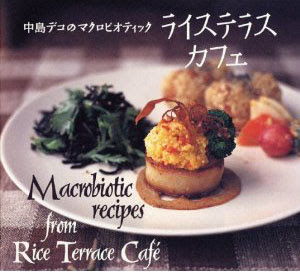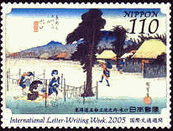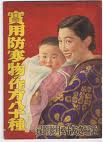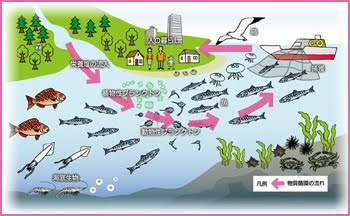[ . BACK to WORLDKIGO TOP . ]
::::::::::::::::::::::::::::::::::::::::::::::::::::::::::::::::::::::::::::::::::::::::::::::::::::
100 Favorite Dishes of Edo
江戸料理百選
Copy the Japanese names and insert them
. HERE .
to see the photos.
. Food vendors in Edo .
. yaozen 八百善 Yaozen restaurant in Asakusa .
:::::::::::::::::::::::::::::::::::::::::::::::::::::::::::::::::::::::::::::::::::::::::::::::::::::
 . . . . . Tofu (touhu)
. . . . . Tofu (touhu)
arare toofu 霰豆腐 "tofu like hail stones"
あられとうふ
The tofu is cut in little cubes like a dice. It may be deep-fried.
asaji dengaku あさじでんがく covered with umeboshi soysauce paste
浅茅田楽 . see Konome Dengaku.
atsuyaki toofu 厚やき豆腐 Thick fried tofu.
bekkau toofu べっかう豆婦 "tortoise shell tofu"
べっかうとうふ
(bekkoo toofu べっこう豆腐)
Cut in triangles, fried to a tortoise shell color.
chawan mushi 茶碗むし / 茶碗蒸 "steamed in a tea bowl"
A favorite in the winter months.
chikuwa toofu 竹輪豆婦 Tofu with chikuwa tubes.
ちくわとうふ
ebi toofu 苗埋菽乳 Tofu with shrimps.
えびとうふ
fuwafuwa toofu ふはふは豆腐 soft ground tofu with an egg
ふはふはとうふ
The mixture is put in boiling water to form a ball, sesame added for flavor.
tamago fuwafuwa 玉子ふわふわ boiled egg with dashi and
irizake 煎酒, made from boiled down sake (to about 80%), with pickled umeboshi plums, bonito shavings and a bit of salt. This
irizake (iri-zake, sake o iru, to boil down ricewine) was used until soy sauce became more readily available as a flavoring.
ganseki toofu 巖石とうふ "Tofu like a rock"
がんせきとうふ
Placed in a clear broth.
gookan toofu 合歓とうふ "Silk tree tofu"
One mochi is placed on top of the tofu.
gutsuni toofu ぐつ煮とうふ gently simmered tofu
With Saikyo miso or red miso. Flavored with mountain pepper.
Served in an earthen pot to keep warm.
hanpen toofu ハンペン豆腐 Hampen made from yam, tofu, water and a bit of salt. Served in a clear hot broth. Also called "shiratama 白玉", white ball
hiryauzu - kaku hiryausu "flying dragon head"
ヒリャウヅ -方ヒレウズ / 飛竜子 / 飛竜頭 / 角飛龍頭
ひりゃうず - かくひりゃうず / 飛竜頭 豆腐
In Kanto it is called
ganmodoki がんもどき.
In Kansai it is called
hiryoozu ひりょうず.
Tofu with a lot of vegetables.
imokake toofu 薯蕷かけ豆腐 Tofu with thick sauce made from grated yam
いもかけとうふ
Served in a broth with katsuobushi.
ise toofu 五瀬豆腐 grind tofu, sea bream, yam and other ingredients, with an egg, simmered in a box, flavored with miso and sansho pepper.
ishiyaki toofu 石焼とうふ stone-fried tofu
Similar to sukiyaki, flavored with grated radish and raw soy sauce.
kamaboko toofu 肉ぼことうふ made in the form of small kamaboko
かまぼことうふ
Tofu and sesame are blended together and simmered into kamabako shape.
kaminari toofu 雷とうふ "Thunder tofu"
かみなりとうふ
Fast fried in sesame oil, so it makes a noise like thunder.
komon toofu 小もんとうふ tofu mixed with slightly grilled nori seaweed, wrapped like a bag
こもんとうふ
Served in hot broth.

konome dengaku, ko no me dengaku 木の芽田楽 Mountain pepper dengaku.
covered with miso paste.
koori toofu 玲瓏とうふ tofu in kanten jelly.
こおりとうふ
Served with a bit of Japanese mustard.
Sometimes brown sugar is added and the tofu eaten as a desert.
koozu yufoofu 高津湯とうふ Hot tofu a la Kozu
こうづゆとうふ
Kinugoshi tofu covered with a hot sauce of kuzu ankake. Also called
Nanzenji tofu 南禅寺豆腐
mino dengaku 簑でんがく "dengaku in a straw coat"
tamago dengaku 鶏卵でんがく egg dengaku
みのでんがく - たまごでんがく
The dengaku is flavored with hot pepper.
The egg dengaku is covered with soy sauce, an egg yolk and sprinkled with black poppy seeds.
misotsuke toofu 味曾漬とうふ Tofu with miso sauce.
mizore soba 霙蕎麦 "buckwheat dumplings in sleet"
みぞれそば
Oborodofu is boiled in dashi shooyu, then some sobakiri buckwheat dumplings are added. White leek, grated radish or wasabi for flavoring.
Ogasawara toofu 小笠原菽乳 Tofu simmered in arrowroot water (kuzuyu 葛湯)
おがさわらとうふ
Decorated with grated radish, thick arrowroot sauce and some katsuobushi.
osasa toofu, ozasa tofu 小竹葉とうふ fried tofu
おざさとうふ
Fried tofu is simmered in soysauce and mirin, a half-boiled egg added. Sesame adde extra flavor.
Cold it can also be used in a bento box.
rokujoo 腐軋 Rokujo Tofu
ろくじょう / 六浄豆腐
This tofu was first made in Kyoto, Rokujoo 京都六条.
It shows the theme of snow at the 88th night, before the first harvest of tea leaves.
 Restaurant Dining in Edo
Restaurant Dining in Edo
shin no udon toofu 真うどん豆腐 Tofu cut in thick pieces like udon noodles.
しんのうどんとうふ
shiran toofu 芝蘭菽乳 "white tofu"
しらんとうふ / ちーらん
White sesame seeds are ground finely, white miso added, white leek parts added. Heaped on hot tofu, with some grated radish.
sushini 酢烹 tofu cooked on a deep-fried sardine
すしに
tataki toofu 叩き豆腐 "beaten tofu"
たたきとうふ
Fried tofu is beaten (chopped) with a knife, an egg white added. The mixture is formed like a hamburger, wrapped in wheat flour and fried.
Best eaten cold.
toofumen 菽乳麺 somen noodles with tofu
とうふめん
Flavored with sesame oil.
tsutsumi age 包油煤 wrapped and fried tofu
つつみあげ
uzumaki toofu 渦まき豆腐 "whirl tofu"
うずまきとうふ
Rolled in a large seaweed leaf (Suizenji nori) 水前寺海菜, with some hardboiled egg-white and kanpyo.
uzumi toofu 埋豆腐 "burried tofu"
うづみとうふ
Flavored with mountain pepper, roasted sesame seeds, hot pepper powder, grated ginger and yuzu citron.
Miso is placed on the burried tofu and rice is placed on top of it.
yukige meshi 雪消飯 "snow-melt rice"
ゆきげめし
Short-cut udon-tofu covered with rice and grated radish. Served in a broth.
. WASHOKU
Tofu Dishes . Bean Curd
................................................................................
. . . . . daikon 大根 large radish dishes

agedashi daikon 揚出大こん Radish in hot broth
Radish fried in sesame oil, then served in a broth of soy sauce and garnished with mountain pepper
daikon mushi 大根蒸 broiled radish
だいこんむし
Made from dried kiriboshi daikon stripes. Sometimes fish is added to make a good broth.
daikon sanchuu ae 大こんさんちやう醤 radish mixew with other ingredients to a saladd
だいこんさんちゃうあえ
Kiriboshi radish stripes are used. Mixed with white sesame seeds, red miso paste and sake. A bit of wasabi is added before serving.
daikon shio zoosui 大根塩ざうすい rice gruel with radish and salt
daikon tooshunkin 大根都春錦 "radish parcel"
Peeled radish, wrapped in yuba, flavored with hot pepper or mountain pepper.
daikon yu namasu 大根湯なます
だいこんゆなます
Japanese style radish salad. Served cold.
Jooshuu Tatehayashi meibutsu daikon soba
上州館林名物大根蕎麦
じょうしゅうたてはやしめいぶつだいこんそば
Buckwheat noodles served with a lot of radish shavings.
Nooshuu meibutsu hoshi daikon meshi
濃洲名物干大根飯
Made from dried kiriboshi radish, a crunchy dish.
Rikyuu abe daikon 利休あへ大根り radish "a la Rikyu"
きゅうあへだいこん
Flavored with cinamon and sesame.
. Sen Rikyuu, Sen Rikyū 千利休 Sen Rikyu .
rinmaki oofurofuki daikon 林巻大風呂吹大根
radish cut like tree rings, boiled in dashi, served on a bed of miso paste, with a slice of yuzu on top.
sanshu awase daikon 三種合大根 radish with katsuobushi
さんしゅあわせだいこん
soomen daikon 素麺大根 radish like somen noodles.
そうめんだいこん
Cut in long strings, served with vinegar, as a mouth cleanser betewen other dishes.
. WASHOKU
Radish Dishes
................................................................................
. . . . . gohan, meshi 飯 rice dishes

aonori zoosui 青苔雑炊 rice gruel with green nori seaweed
あおのりぞうすい
daikon meshi 大根飯 with radishes
..... Echizen no daikon meshi 越前国大根飯
with radishes from Echizen
hidara meshi 乾呉魚飯 rice with dried cod
ひだらめし
Mentioned in a cookbook from 1802. The fish filets are dried over a medium heat and then cut in small stripes. They are then mixed with the cooked rice.
names of the cooking heat in Edo
bunka 文火 (ぶんか) low heat/flame (yowabi 弱火)
bunbuka 文武火(ぶんぶか)medium heat/flame (chuubi 中火)
buka 武火(ぶか) high heat/flame (tsuyobi 強火)
hotarumeshi, hotaru meshi ホタル飯 "firefly rice"
ほたるめし / 蛍飯
During the hunger periods. 190 g rice was cooked with 4,300 g of starowort leaves (yomena) and mugwort (yomogi). The few white rice grains would look like fireflies in the green leaves mush.
((( Another way to make cooked rice last longer during a famine was putting more water into rice gruel, calling it "
mirror rice" (kagami meshi 鏡飯) or
omoyu おもゆ 重湯】). )))
kadame meshi 海帯めし rice with wakame kelp.
かだめめし
kadame 加太和布 is a special kelp harvested in Wakayama, Kishu, in Kada town 加太浦.
kakimeshi 牡蛎飯 rice with oysters
Cooking oysters would prevent the outbreak of indigestion and food poisoning in times without refrigerator.
. kokerazushi こけらずし kokera sushi
konnyaku meshi 蒟蒻飯 rice with konyak devil's tongue
konoha meshi 木の葉めし"rice with tree leaves"
このはめし
Fresh sprouts and buds were mixed in spring food.
kotori, shookin zoosui 小禽ざうすい
rice gruel with "little birds"
mana zoosui 菁蕪菜雑炊 rice gruel with leaves of turnip
まなぞうすい
namakai meshi 石明魚飯 rice with fish
なまかいめし
nankin gayu なんきん粥 kayu. rice gruel with pumpkin
Pumpkin and red beans were cooked with the rice. It was a very warming slightly sweet dish in winter.
nasubi zoosui 茄子ざうすい rice gruel with eggplants
nattoo modoki 賽淡鼓 "looking like fermented beans"
なっとうもどき
modoki was a way to prepare vegetable dishes "looking like" fish or meat. It was often done in temples.
negi meshi 葱めし rice with
leek
Many other vegetables can be added, also sweet chestnuts and shiitake mushrooms. Served in a hot broth 達失汁.
leek was grown in the fields around Edo, see
Edo Vegetables below.
negi zoosui 葱ざうすい gice gruel with leek
nira zoosui 韮ざうすい rice gruel with
nira leek
にらざうすい
leek dishes are all typical winter dishes.
Rikyuu meshi 利休めし
rice cooked "a la Rikyu"
Sen no Rikyu (千利休, 1522 – 1591) was the founder of the tea ceremony.
Rice is cooked with hoojicha tea, then dashi broth is added. Some green stems of rape (na no hana) are added as topping.
This is a typical dish of spring.
. sakurameshi 桜めし "cherryblossom rice"
shijimi meshi 蜆肉飯 rice with corbilula clams
shiso meshi 紫蘇飯 rice with perilla
しそめし
soba meshi 蕎麦飯 with buckwheat noodles
someii, somei-i 染飯 colored rice
そめいい
Already mentioned in 1553. It is colored with
kuchinashi gardenia and becomes a bright yellow color. It was popular in the tea stalls along the 53 stations of the Tokaido road. Gardenia extract was like a medicine against weak feet and brought back energy.
taimeshi 道味魚飯 -鯛飯 rice with slices of sea bream
たいめし - たいめし
toofu zoosui 菽乳雑炊 rice gruel with tofu
yamabuki meshi 山吹めし "yellow rice"
yamabuki is the yellow color of the plant "yellow rose", the color of coins in the Edo period and the color of egg yolk.
A hard-boiled egg is placed on the rice, served with broth, some grated ginger and a bit of salt.
yudoofu modoki 賽湯菽乳 "looking like hot tofu"
ゆどうふもどき
「賽(ゆ)湯菽(どうふ)乳(もどき)
Hot rice gruel with arrowroot sauce, some grated ginger and mustard for flavoring.
Some of the ingredients mixed with rice have their own entry in this BLOG.
. WASHOKU
Rice Dishes (meshi, gohan)
................................................................................
. . . . . tai 鯛 sea bream dishes

kakitaimushi, kaki tai mushi かき鯛むし
steamed sea bream with oysters
かきたいむし
makitai 巻鯛 "rolled sea bream"
まきたい
sarasa tai さらさ鯛 "chinz sea bream"
さらさたい
Satsuma meibutsu koro iridai 薩摩名物ころ煮鯛
ころいりだい
simmered sea bream a la Satsuma
Satsuma satootsuke tai さつま砂糖漬鯛
さつまさとうつけたい
sea bream pickled in brown sugar, a la Satsuma
Satsuma tai no atsumejiru 薩摩鯛のあつめ汁
Rice soup atsumejiru with sea bream, a la Satsuma
sugiyaki tai 杉やき鯛 sea bream served in a box made of cedar wood.
Fish is flavored with miso paste.
taimaru ageni 鯛丸あげ煮 whole fried sea bream
A small fish is used. Flavored with soy sauce.
taimeshi 道味魚飯 - 鯛飯 rice cooked with sea bream
たいめし - たいめし
tai no koo no mono sushi 鯛の香物酢
たいのこうのものすし
sea bream pickled with vinegar
tai no soborojiru 鯛のそぼろ汁
doosuma ・同すましそぼろ
たいのそぼろじる・どうすま
small pieces of sea bream in hot broth
tai no tororojiru 鯛の青淵汁
たいのとろろじる
Soup with grated
jinenjo yam and sea bream
. WASHOKU
Sea Bream Dishes
.................................................................................
. . . . . tamago 卵 egg dishes

aemaze あえまぜ a kind of fish salad, with vegetables and egg
嚮食交
Sometimes sake was used for a dressing.
isona tamago いそなたまご "beach flavor eggs"
磯菜卵
After boiling half-soft in vinegar and irizake, they are sprinkeld with nori from Asakusa or wasabi.
matsukaze tamago 松風卵 egg a la "wind in the pines"
まつかぜたまご
Rikyuu tamago - Kurumi tamago 利休卵 / 胡桃卵
りきゅうたまご - くるみたまご
eggs "a la Rikyu" and walnut eggs
Simmered egg with ground sesame seeds (or ground walnut meat), flavored with soy sauce and sake.
shigure tamago 時雨卵 "winter drizzle eggs"
しぐれたまご
A kind of
okonomiyaki omelette.
tamago dojoo たまごどじょう loach soup with egg
卵鰌魚
Yanagigawa nabe 柳川鍋(やながわなべ)
tamago hanpen 玉子半ぺん hampen with egg
tamago iridashi 玉子いり出し soup with egg
tamago kaiyaki 玉子貝焼 fried eggs with seashells
uzura tamago 鶉卵 quail eggs
うずらたまご
yosetamago 寄卵 eggs mixed with other ingredients
よせたまご
Food colored yellow with egg yolk was called
yamabuki, for example
yamabuki kamaboko やまぶきかまぼこ yellow kamaboko fish paste.
. WASHOKU
Egg Dishes
tamago hyakuchin 「卵百珍」(たまごひゃくちん)
100 dishes with eggs
cookbook from 1785
.................................................................................

Illustrated Book
www.unizon.co.jp
. Reference : 江戸料理百選
江戸の料理本
Cooking Books from Edo
江戸料理レシピデータセット
『万宝料理秘密箱 卵百珍』の江戸料理レシピ
- source : codh.rois.ac.jp/edo-cooking -
:::::::::::::::::::::::::::::::::::::::::::::::::::::::::::::::::::::::::::::::::::::::::::::::::::::
Books about the food culture of Edo

江戸食百珍
Edo Shoku Hyaku Chin
- - - - - external link
Banquets against Boredom
Eric C. Rath, University Kansasfae
*****************************
Things found on the way
. nattoo uri 納豆売り natto vendor in Edo .
. Doing Business in Edo - 江戸の商売 .
.......................................................................
Edo, The City That Became Tokyo
. The town of Edo 江戸 大江戸
. Edo-Vegetables (Edo yasai 江戸東京野菜)
. Edo no takenoko 江戸の筍 bamboo shoots in Edo .
*****************************
Related words
*****
. Miso culture in Japan (みそ or 味噌) .
. WASHOKU - Dishes from Tokyo
*****
WASHOKU : General Information
*****
WASHOKU : Regional Japanese Dishes
:::::::::::::::::::::::::::::::::::::::::::::::::::::::::::::::::::::::::::::::::::::::::::::::::::::::::::::::::::::::::::
[ . BACK to DARUMA MUSEUM TOP . ]
[ . BACK to WORLDKIGO . TOP . ]
- #edofood #edoryori #edowashoku #washokuedo -
:::::::::::::::::::::::::::::::::::::::::::::::::::::::::::::::::::::::::::::::::::::::::::::::::::::::::::::::::::::::::::






































